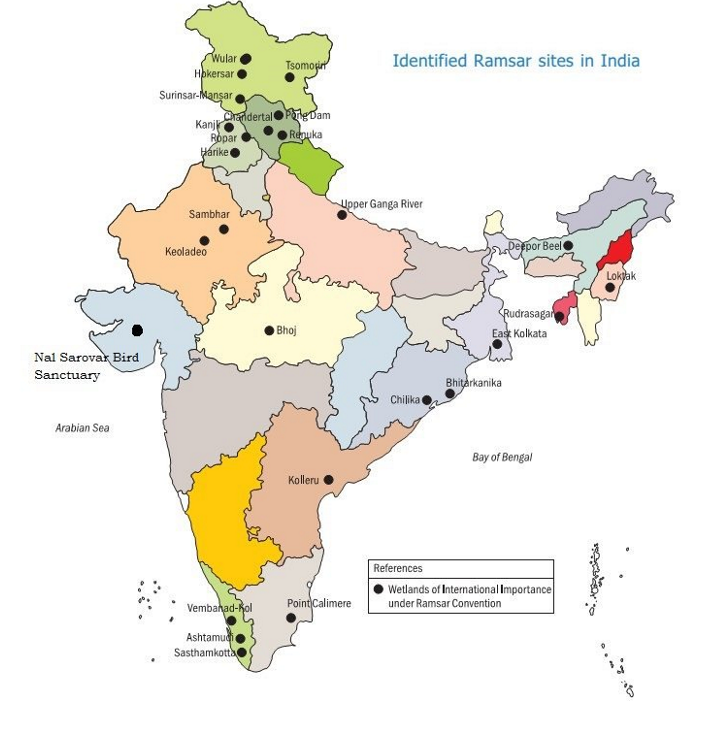Deepor Beel: Assam’s Biodiversity Gem and Ramsar Wetland
Why in the news?
Recognized for its ecological value, Deepor Beel faces increasing environmental threats, highlighting the urgent need for sustained conservation to protect migratory birds, aquatic biodiversity, and the livelihoods of local communities dependent on the wetland.
 Ecological Importance
Ecological Importance
- The wetland is crucial for migratory flyways, supporting large populations of aquatic birds during winter.
- Noteworthy bird species include the Spot-billed Pelican, Lesser Adjutant Stork, Greater Adjutant Stork, and Baer’s Pochard, many of which are globally threatened.
- The surrounding Rani and Garbhanga hills form a natural habitat for Asiatic elephants, further enhancing the ecosystem’s biodiversity.
Livelihood and Conservation Efforts
- The wetland supports approximately 1,200 households across 12 villages who rely on its 50 fish species and aquatic resources for livelihood.
- Conservation efforts are essential to sustain this biodiversity-rich ecosystem and safeguard the livelihoods dependent on it.
- Deepor Beel’s fragile ecosystem requires ongoing protection to maintain its ecological and social balance.
Deepor Beel: Assam’s Ramsar Wetland and Biodiversity Hub
- Deepor Beel is a perennial freshwater lake located on the outskirts of Guwahati, Assam, covering 4.1 sq. km.
- It was formed from a former channel of the Brahmaputra River and functions as a primary stormwater storage basin for Guwahati.
- Recognized as a Ramsar Site in 2002 and an Important Bird and Biodiversity Area (IBA) in 2004, it holds immense ecological value.
This biodiversity haven stands as a testament to Assam’s rich natural heritage and emphasizes the need for long-term conservation strategies.





